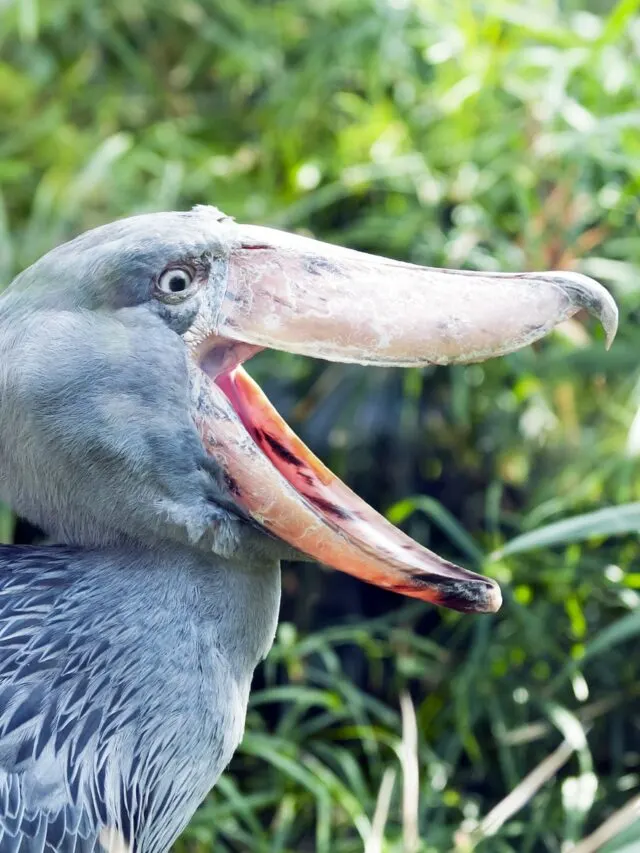The African wilderness is home to a treasure trove of awe-inspiring creatures, each unique. Among these remarkable inhabitants, the shoebill stork (Balaeniceps rex) stands figuratively, and literally, tall. This avian giant, often called the “whale-headed stork,” is a living relic of prehistory. With its distinctive shoe-shaped bill, striking appearance, and intriguing behaviors, the shoebill stork captures the imagination of bird enthusiasts and wildlife lovers worldwide. The shoebill stork’s interesting mating call serves as a wonder of nature.
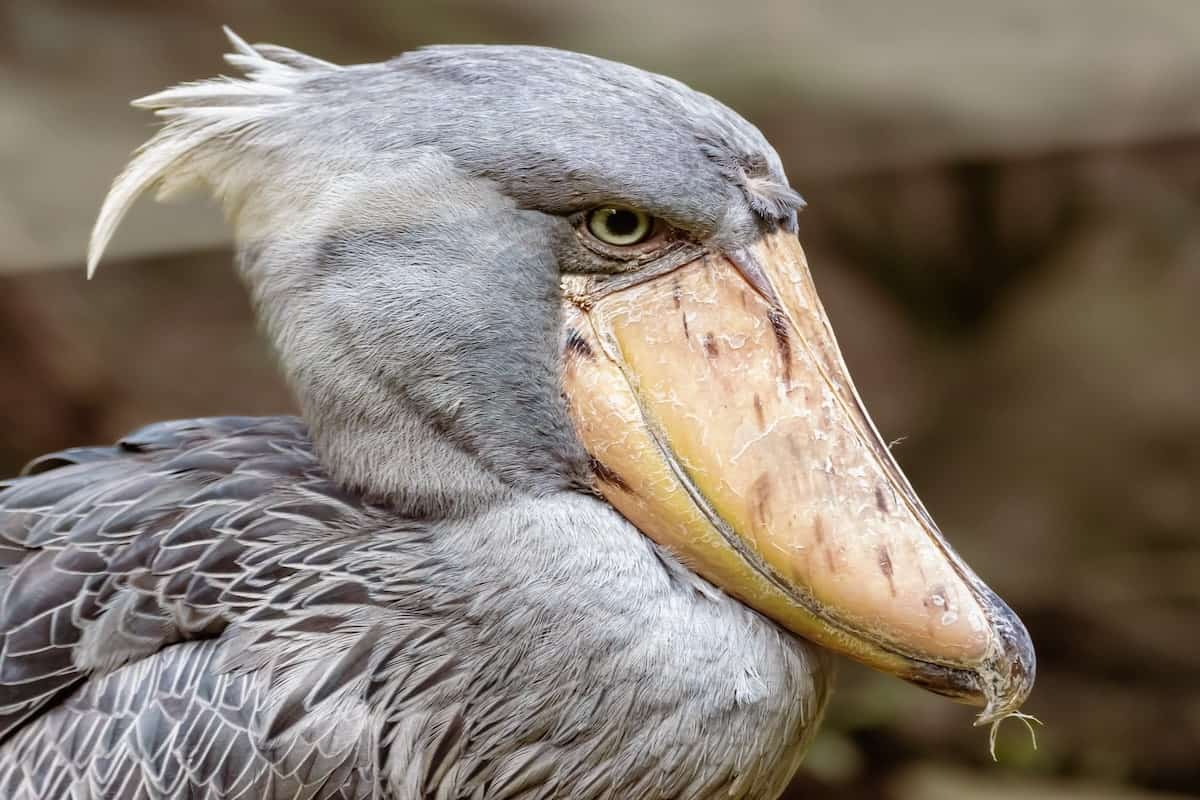
The Shoebill’s Impressive Stature
Standing at an astounding height of up to 5 feet and possessing a wingspan of approximately 8 feet, the shoebill stork is a true colossus among birds.
Imagine a bird large enough to make even the most imposing herons and cranes appear diminutive in comparison.
This avian giant is predominantly found in the swamps, wetlands, and dense papyrus stands of central tropical Africa, particularly in countries like Sudan, Zambia, Uganda, and the Democratic Republic of the Congo.
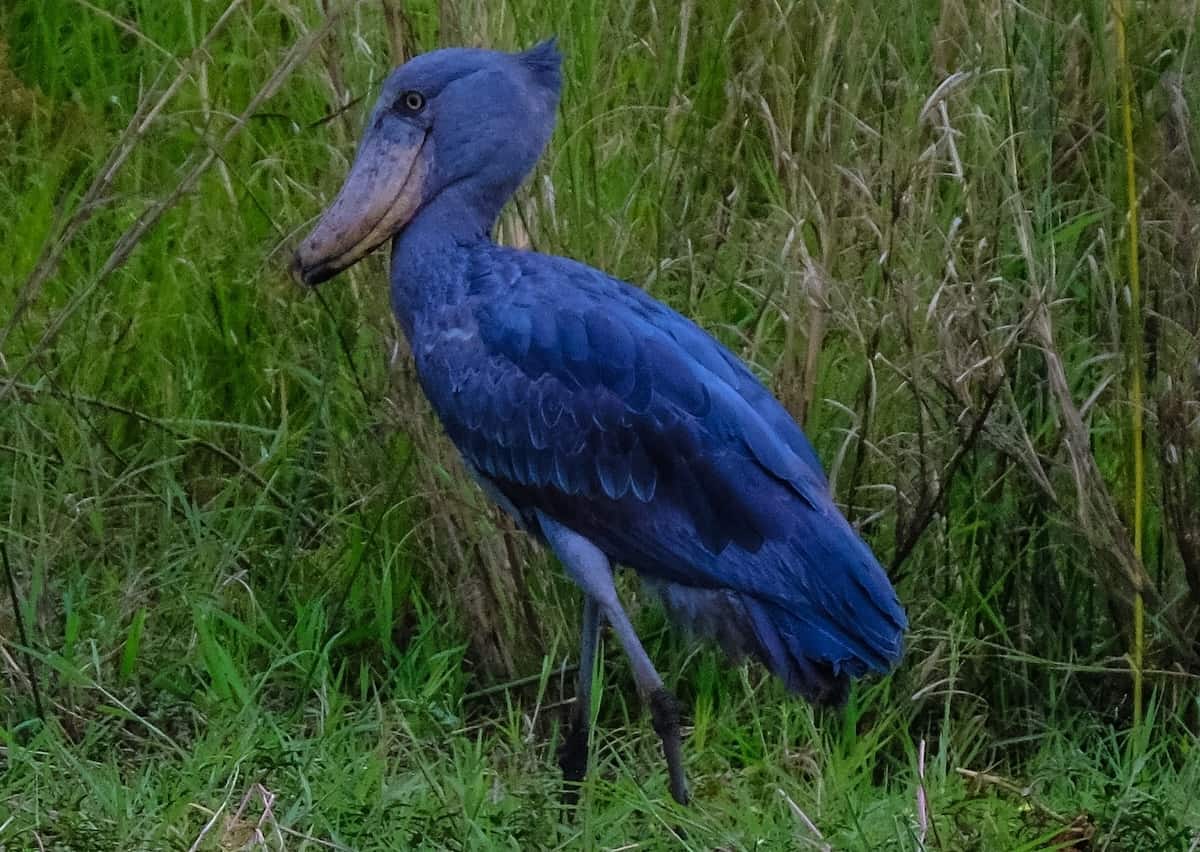
A Close Look at the Shoebill’s Appearance
The shoebill’s most defining feature, and the source of its name, is its enormous, shoe-shaped bill, which is well-adapted for its piscivorous (fish-eating) lifestyle.
The upper mandible of the bill is lined with serrated edges, providing an effective tool for catching fish, amphibians, and even smaller birds.
This unique adaptation sets the shoebill apart from its avian counterparts and adds to its appeal for wildlife enthusiasts.
Their plumage, predominantly a steely gray-blue with an ashy undertone, blends well with the wetland surroundings, allowing them to become near-invisible while waiting for their prey.
When they decide to make themselves known, their striking orange eyes and striking faces make for a captivating sight.
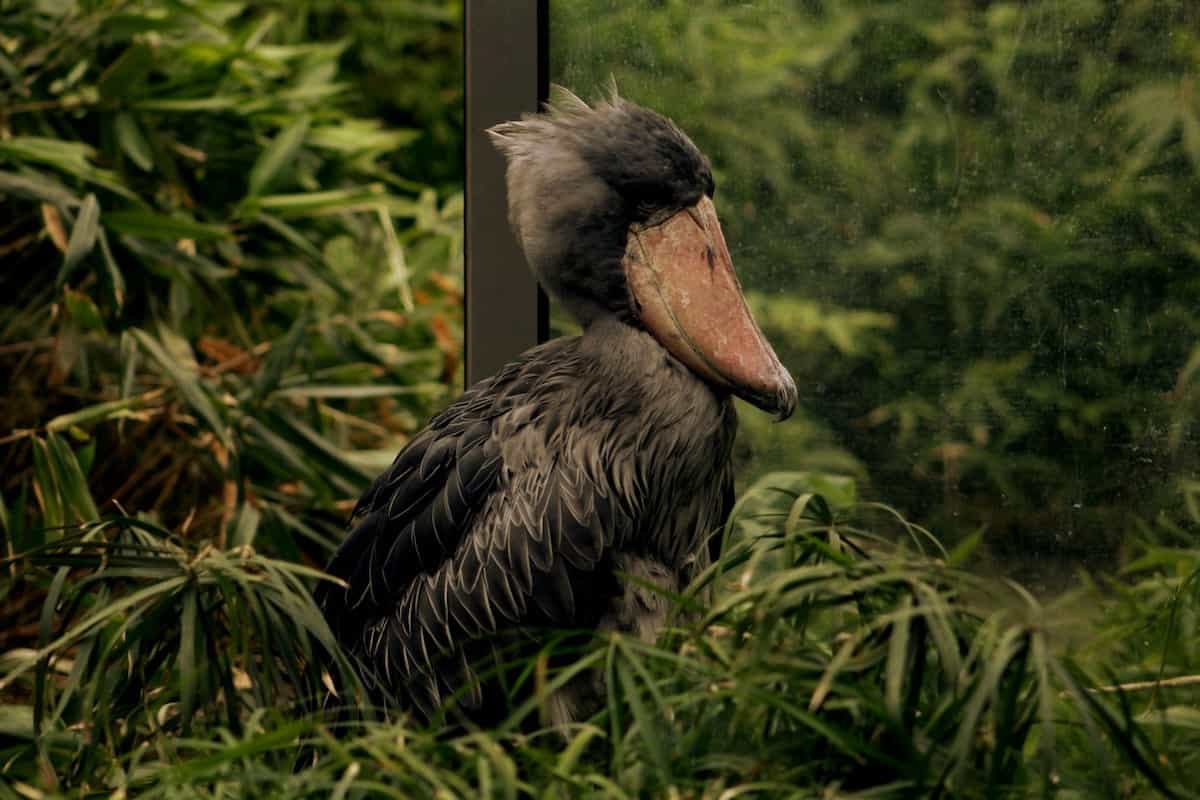
Shoebill Behavior and Lifestyle
Shoebill storks are renowned for their solitary and somewhat reclusive nature.
While they may not be social traditionally, these birds do not mind sharing their territory with other shoebills during the breeding season.
These monogamous birds generally nest and raise their young in relative isolation.
Shoebills are highly patient hunters, capable of remaining stationary for hours, silently waiting for their prey to come within striking distance.
Once a target is detected, they employ a swift and precise strike with their powerful bill, making it look almost effortless.
It is a testament to their exceptional hunting skills that shoebills can catch and swallow fish as large as their bill.
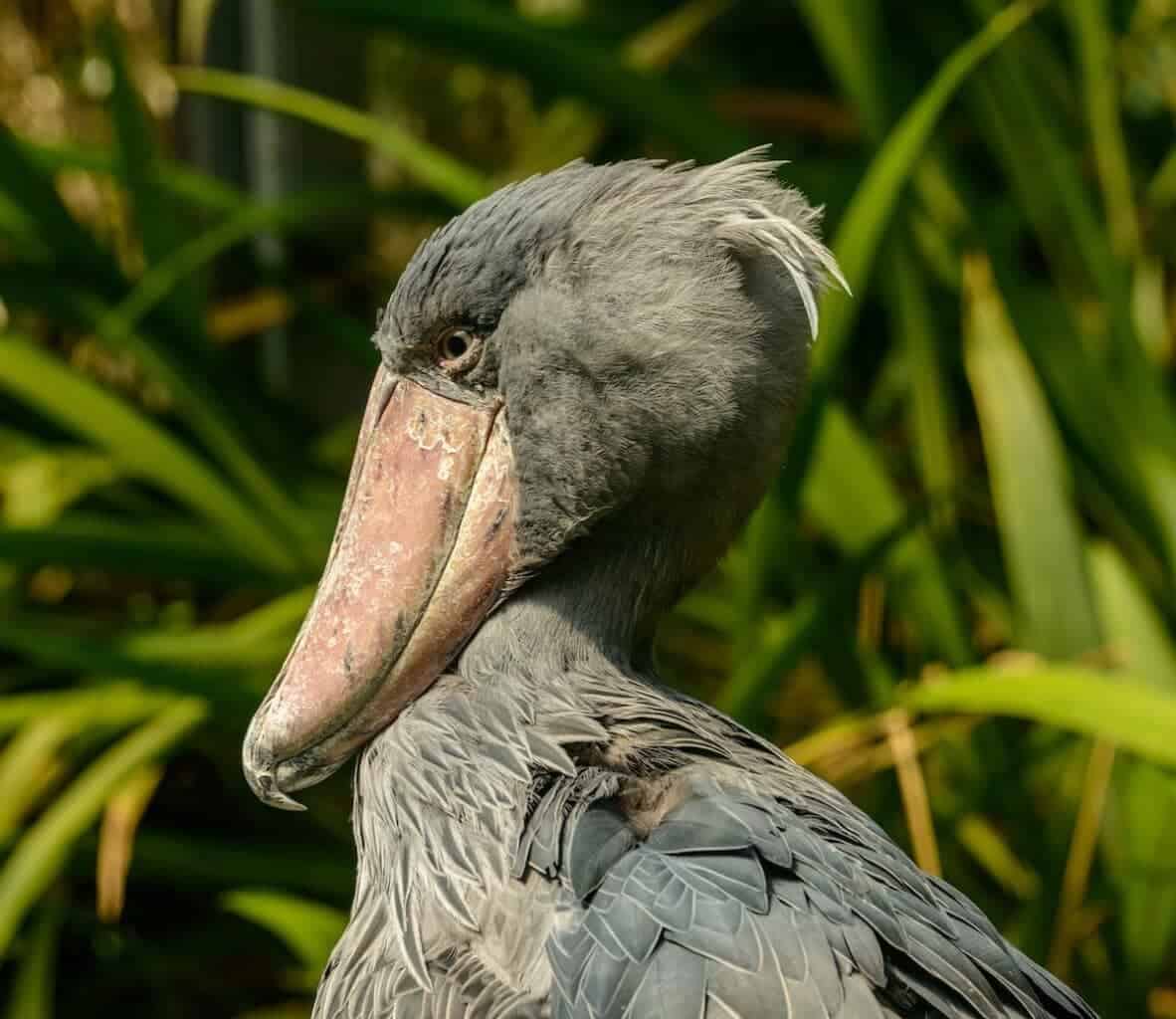
Shoebill Mating and Reproduction
The breeding season for shoebill storks usually occurs during the dry season when water levels in the swamps and wetlands are lower, making it easier to find food.
During this time, pairs of shoebills engage in an elaborate courtship ritual involving bill-clapping, mutual calling, and displays of oversized bills.
These displays are a sight to behold and a vocal and expressive declaration of their bond.
After this courtship, the female shoebill typically lays one to three eggs in a well-constructed nest made of aquatic vegetation.
Both parents take turns incubating the eggs, which hatch after about 30 days.
The chicks are born with a covering of white down feathers and gradually develop their iconic gray-blue plumage as they grow.
Parental care is shared, with both mother and father feeding the young birds and keeping them warm.
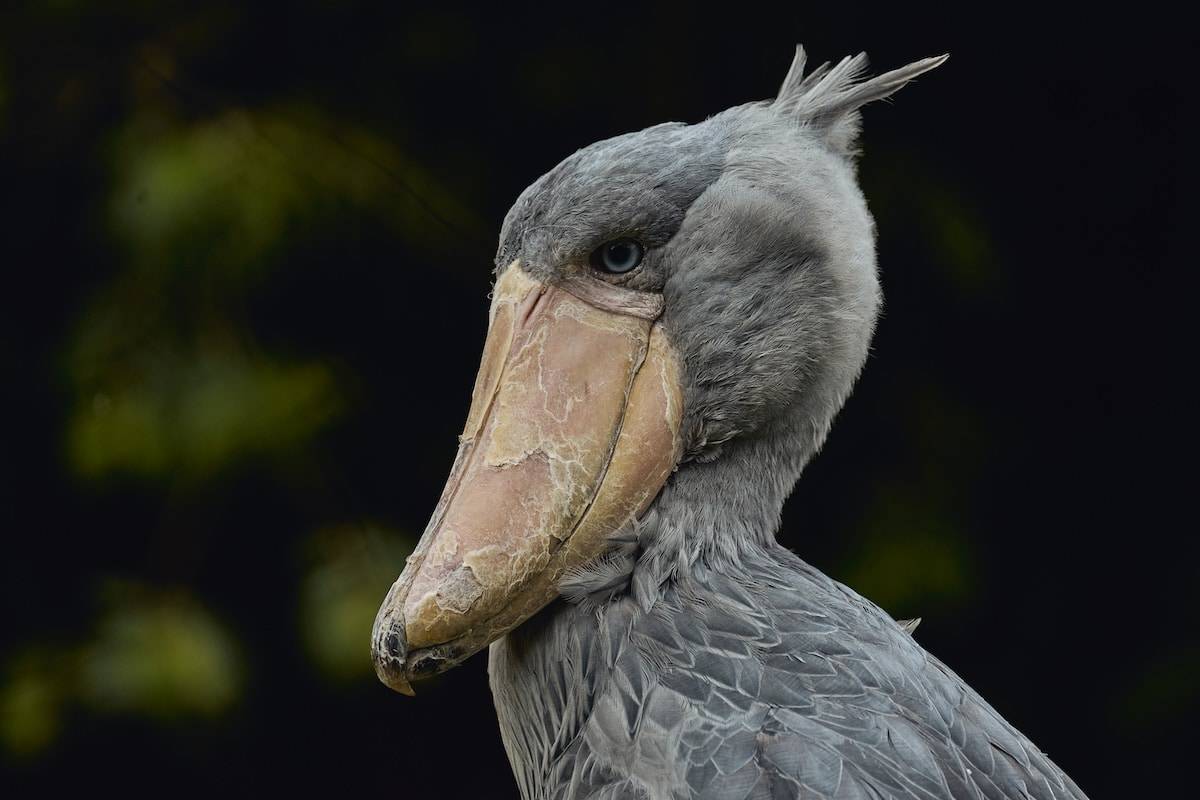
The Interesting Mating Call of the Shoebill Stork
The video showcases a captivating moment when a shoebill stork performs its distinctive courtship call, accompanied by its characteristic bill-clapping.
Watching and listening to this impressive display of affection between a pair of shoebill storks is a testament to the wonders of nature.
You can enjoy this delightful display of avian love.
In this short but enchanting video, you’ll witness the shoebill stork’s unique vocalizations and the symbolic bill-clapping, which play a vital role in their courtship rituals.
The deep, resonating calls echo through the wetlands, creating an unforgettable experience that underscores the majesty of these incredible birds.
The Shoebill’s Vulnerability and Conservation Efforts
Despite their size and strength, shoebill storks are vulnerable to various threats, primarily due to habitat loss and degradation.
The draining of wetlands, deforestation, and human activities encroaching on their habitat have placed these magnificent birds in peril.
Furthermore, they are sometimes hunted for their feathers, meat, and for the pet trade, though hunting them is illegal in many of their range countries.
Conservation organizations and wildlife enthusiasts are actively working to protect the shoebill stork.
Efforts include the creation of protected areas and the promotion of sustainable practices in wetland habitats.
Raising awareness about the importance of these birds and their role in the ecosystem is crucial to their survival.
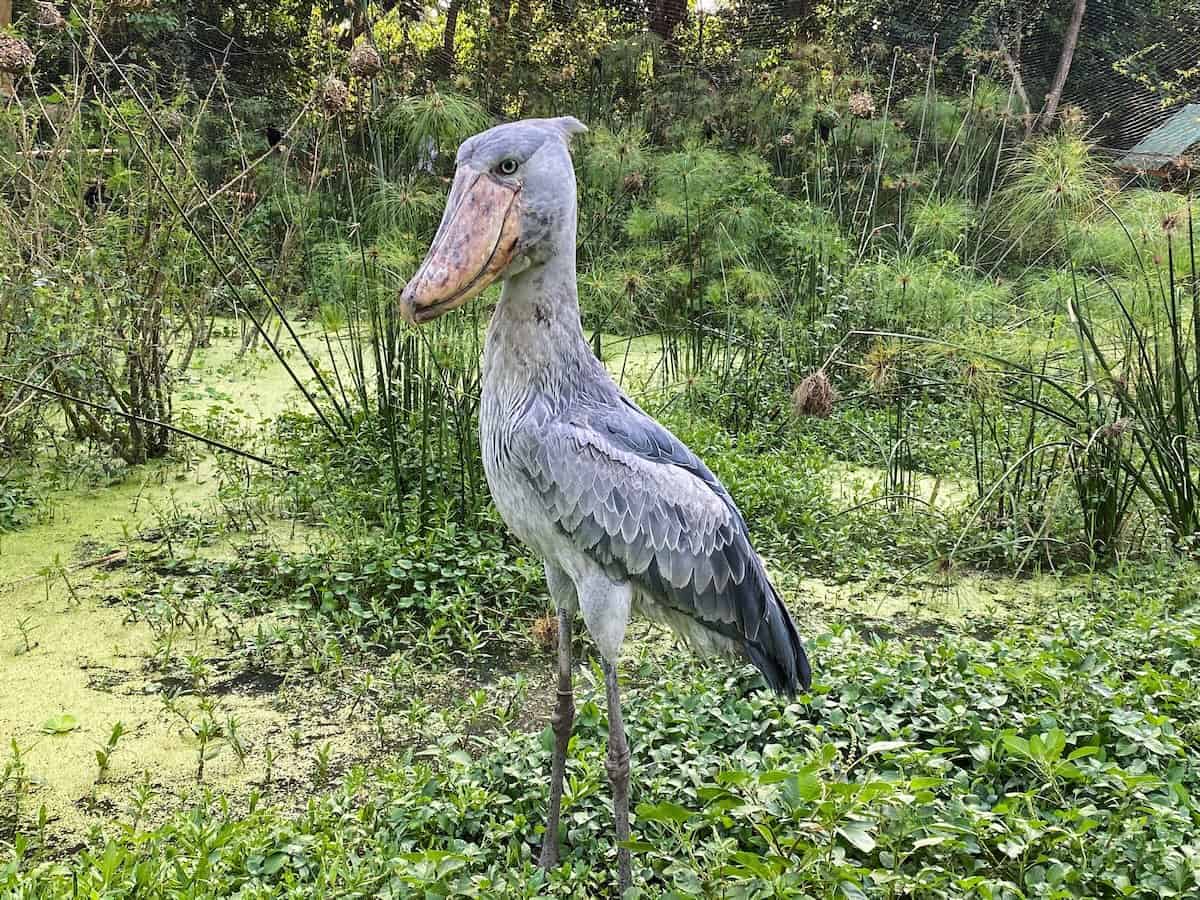
Shoebill’s Mating Call: Conclusion
In the enchanting realm of African wetlands, the shoebill stork is an iconic symbol of grace, strength, and adaptability.
With its extraordinary size, peculiar appearance, and unique hunting prowess, this prehistoric giant is a captivating creature.
Its behavioral traits, such as its striking courtship rituals and the diligent care it provides to its offspring, add an endearing touch to its persona.
Yet, despite its magnificence, the shoebill stork is not invincible, facing threats from habitat destruction and poaching.
We must recognize these remarkable birds’ significance and their vital role in the ecosystem.
Conservation efforts and the preservation of their habitat are paramount in ensuring the survival of the shoebill stork for future generations to admire.
I hope you enjoyed reading about the shoebill stork and learned something new about these wonderful birds.
To read more about storks, check out the articles below:
- Proud Stork Parents Celebrate Their First Egg
- Watch as a Father Stork Brings Blanket to Warm the Mother Stork
- Alligator Tries to Eat Stork But Gets Eaten by Crocodile
Join our Forum for free today!

- Brown Bear Approaches And Wiggles His Foot - July 22, 2024
- Mountain Biker Has An Extremely Close-up Encounter With a Wild Giraffe - July 22, 2024
- Eagle Flies Into a Moving Car - July 21, 2024

